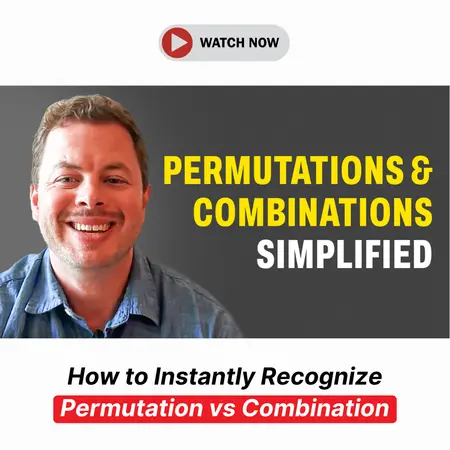Events & Promotions
|
|

GMAT Club Daily Prep
Thank you for using the timer - this advanced tool can estimate your performance and suggest more practice questions. We have subscribed you to Daily Prep Questions via email.
Customized
for You
Track
Your Progress
Practice
Pays
Not interested in getting valuable practice questions and articles delivered to your email? No problem, unsubscribe here.
- Nov 20
07:30 AM PST
-08:30 AM PST
Learn what truly sets the UC Riverside MBA apart and how it helps in your professional growth - Nov 20
01:30 PM EST
-02:30 PM IST
Learn how Kamakshi achieved a GMAT 675 with an impressive 96th %ile in Data Insights. Discover the unique methods and exam strategies that helped her excel in DI along with other sections for a balanced and high score. - Nov 22
06:30 AM PST
-08:30 AM PST
Let’s dive deep into advanced CR to ace GMAT Focus! Join this webinar to unlock the secrets to conquering Boldface and Paradox questions with expert insights and strategies. Elevate your skills and boost your GMAT Verbal Score now! - Nov 22
11:00 AM IST
-01:00 PM IST
Do RC/MSR passages scare you? e-GMAT is conducting a masterclass to help you learn – Learn effective reading strategies Tackle difficult RC & MSR with confidence Excel in timed test environment - Nov 23
11:00 AM IST
-01:00 PM IST
Attend this free GMAT Algebra Webinar and learn how to master the most challenging Inequalities and Absolute Value problems with ease. - Nov 24
07:00 PM PST
-08:00 PM PST
Full-length FE mock with insightful analytics, weakness diagnosis, and video explanations! - Nov 25
10:00 AM EST
-11:00 AM EST
Prefer video-based learning? The Target Test Prep OnDemand course is a one-of-a-kind video masterclass featuring 400 hours of lecture-style teaching by Scott Woodbury-Stewart, founder of Target Test Prep and one of the most accomplished GMAT instructors.
Kudos
Bookmarks
I am also with "D". But I have some doubt about using "in 1909" just after "Selma Lagerlöf became". I think sentence must be like below.
......, in 1909, Selma Lagerlöf became......
Help me to get out of this doubt.
......, in 1909, Selma Lagerlöf became......
Help me to get out of this doubt.
Kudos
Bookmarks
gvij2017
An adverb (or adverbial phrase as in this case) can be positioned at the front, at the end or in the middle of a sentence. In option D the adverbial phrase "in 1909" takes the mid-position. (Though it is more common for an adverb/adverbial phrase of time to take the end or the front position, it is seen in this example that GMAT accepts the mid position as well.)
Kudos
Bookmarks
devanshu92
Case 1: Turning away from literary realism to write: here "to write" is an infinitive depicting a purpose - WHY the writer turned? - to write.
Case 2: Turning away from literary realism to writing: there is no infinitive in this case - the idiom "FROM X TO Y" is used; X = realism (noun) and Y = writing ( gerund - also a noun). Here no purpose is depicted - just that the writer turned from X to Y.
You may compare the second case to the following example frequently used at the end of personal letters:
"Looking forward to seeing you."
Here "to" is an ordinary preposition and "seeing" is a noun (gerund), the object of preposition "to". Using infinitive "Looking forward to see you" would be wrong in this case since NOT the purpose of looking forward is to see you. The object of "looking forward to" is "seeing you" - looking forward to WHAT? - seeing you.












